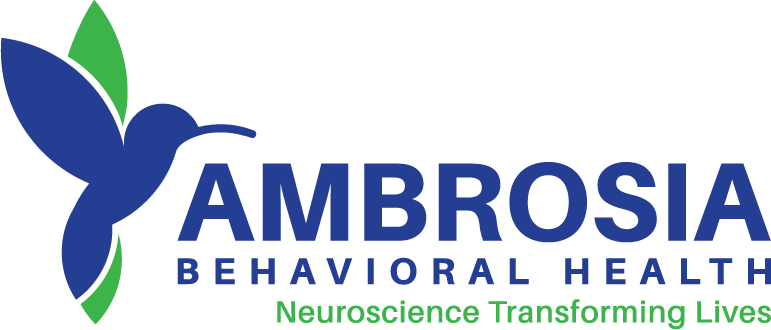Adderall is a brand name prescription medication used to treat attention-deficit hyperactivity disorder (ADHD). The formula for Adderall is a combination of four types of amphetamine salts that are designed to increase focus and wakefulness. Adderall is a Schedule II controlled substance in the United States. When taken as prescribed, this medication gives people with ADHD the ability to stay focused and avoid distractions.
While medically necessary for some, Adderall can be addictive, especially when taken recreationally. Off-label and recreational use has skyrocketed in recent years due to its ability to help people stay awake and focused for long periods. As a result, abuse of so-called “study drugs” has become widespread at universities and businesses across the country.
The Difference Between Adderall vs Meth
Even though Adderall is chemically similar to meth and they share many side-effects, they are distinct chemical substances. Both methamphetamine and Adderall both belong to a group of drugs known as amphetamines. Methamphetamine, though, is more potent because it can easily pass through the blood-brain barrier.
Methamphetamine is only available as a prescription medication in rare cases. Almost all meth sold on the street is made illegally in drug labs and sold as an illicit drug. Both methamphetamine and Adderall have side effects and health risks, and when abused, both drugs can lead to addiction.
According to Frontiers in Molecular Neuroscience, meth contains a wide range of chemicals and is neurotoxic – meaning it can cause damage to the brain. Because of its chemical makeup, meth crosses the blood-brain barrier more easily than Adderall, making the effects more powerful.
What Are the Side Effects of Taking Adderall?
Adderall and other ADHD medications are designed to increase focus and attention span for those who struggle with attention issues. In high enough doses, Adderall causes euphoria, having a similar effect to other stimulant drugs like meth and cocaine. One study found that 25% of college with ADHD had taken their prescription stimulants to achieve a high (Brain and Behavior).
The short-term side effects include feelings of restlessness and irritability, cardiac issues, weight loss and trouble sleeping. Some users also report anxiety and feelings of nervousness. Even when taken as prescribed, Adderall can cause adverse side effects. It is always important to adhere to the prescribed dosage. Taking a non-prescribed drug can lead to addiction or severe physical side-effects.
Long-term use of Adderall can cause depression and irritability. It can also lead to diseases of the heart muscles, heart attack and even seizures. Some individuals develop hostility and behavioral changes. Others experience severe allergic reactions to the drug, which can be severe.
Just like meth, Adderall can be addictive both psychologically and physically. Addicts are likely to develop tolerance or experience withdrawal symptoms. Others suffer psychological symptoms like compulsive drug-seeking behavior.
[sc name=”blog-cta” ][/sc]What Are the Side Effects of Taking Meth?
Meth is known to be a highly addictive and potentially dangerous drug that can cause serious side effects. Long term abuse of meth typically leads to dependence and eventually addiction. The physical side-effects of using meth include loss of appetite, leading to severe weight loss. Meth can also trigger reproductive issues such as infertility, neonatal abstinence syndrome and miscarriage.
Skin infections are also common among methamphetamine users. These sores are caused by tactile hallucinations that make users feel a crawling sensation on their skin. Users frequently pick or scratch at their skin to relieve this crawling sensation, causing sores and scarring.
One of the more grotesque side-effects of meth use is meth mouth, a condition where individuals develop severe tooth decay and gingivitis. Most of these dental problems are a combination of poor dental hygiene, poor diet and grinding of the teeth (Mouth Healthy). Poor hygiene isn’t unique to meth users. Nonetheless, methamphetamine addiction has become synonymous with bad dental health.
Psychological side effects include impaired cognition, decreased memory motor skills, and poor judgment. Users also struggle with delusions or hallucinations and can become hostile or aggressive towards other people. Paranoid feelings and anxiety also develop in others while others can have anhedonia (inability to feel pleasure which is due to the dopamine receptors in the brain destroyed).
As a person uses more of the drug, the body builds up a tolerance and eventually becomes dependent. Withdrawal symptoms usually begin a few hours after the last dose and can continue for up to three weeks (Australian Government Department of Health). The beginning stages of meth dependence can further evolve into meth addiction.
Is Adderall Medication More Addictive Than Meth?
Statistics show that more people abuse meth than abuse prescription stimulants like Adderall. In 2018, 1,033,000 people reported that they’ve struggled with methamphetamine use disorder in the past year (SAMHSA). Price, availability and potency are likely what makes meth addiction so widespread. According to data from the Substance Abuse and Mental Health Services Administration, 1,824,000 Americans used methamphetamine in the past year. By comparison, 4,739,000 Americans reported using prescription stimulants in the past year, but the rate of addiction is significantly lower.
Both meth and Adderall are Schedule II substances – meaning that they can cause addiction even though they can be used medically. A study by the Journal of Biological Chemistry suggests that given equal amounts of methamphetamine and amphetamine, meth had a more significant effect on dopamine clearance. Dopamine is an integral part of the brain’s pleasure and rewards system. This could explain why meth has a higher addictive potential than Adderall, even though the two drugs are from the same family. Most people who use Adderall do so for medical reasons under the close supervision of a medical doctor. On the other hand, people who use meth are almost always obtaining the drug illegally.
Both Adderall and meth contain powerful amphetamines that result in powerful effects on the body. Adderall is considered safe and effective as long as it is used for medical purposes according to a doctor’s instructions. Meth, on the other hand, is rarely used in a medicinally. Nonetheless, abusing either Adderall or meth can lead to addiction as well as a variety of other health complications.
Amphetamine Addiction Treatment in South Florida
If you or a loved one have developed issues stemming from amphetamine use, don’t hesitate to reach out to our team. Ambrosia Treatment Center remains open to care for clients, families and our communities suffering from mental health and substance abuse. Please do not hesitate to reach out 24-hours a day for any questions, concerns and referrals to get you the help you deserve. Quickly begin the admissions process today.




